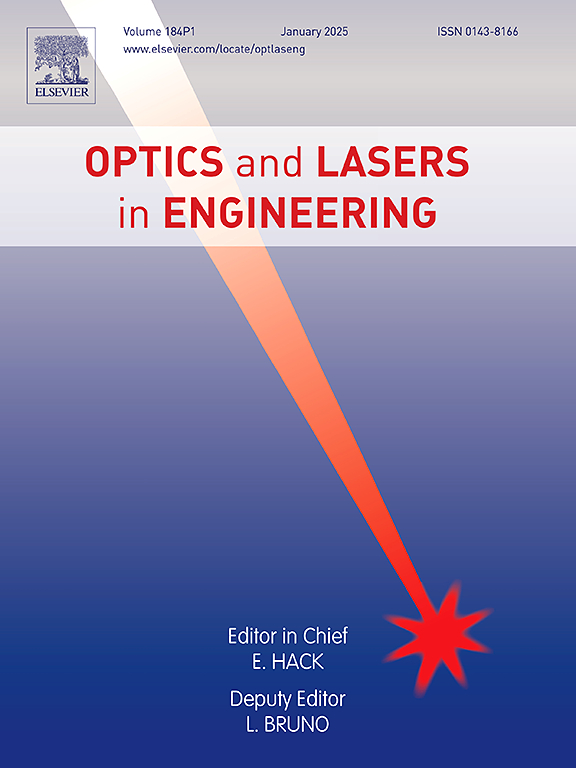360° curved surface stitching projection light field display and reuse acceleration encoding algorithm based on parallax image
IF 3.5
2区 工程技术
Q2 OPTICS
引用次数: 0
Abstract
This study established a 360° curved surface stitching light field 3D reconstruction system and proposed a novel Curved surface Stitching Reuse Acceleration (CSRA) light field encoding algorithm based on parallax images, alongside a surface stitching light field calibration algorithm, collectively achieving a 360° horizontal parallax naked-eye 3D display. Improved from the traditional flat algorithm, the CSRA algorithm computes the mapping relationships for each reconstruction light ray under curved conditions by leveraging the central symmetry of the 360° curved surface light field for path reuse acceleration. This method significantly boosts encoding speed while preserving reconstruction quality. Concurrently, the surface stitching light field calibration algorithm proficiently amends reconstruction errors through multi-partition perspective transformations. The application of these algorithms in a 360° projection light field reconstruction system utilizes a circular array of projectors and cylindrical lens compound diffusers to generate expansive, 270° field-of-view three-dimensional display effects horizontally. Tested with various datasets, the system demonstrated high visual fidelity, as evidenced by PSNR and SSIM indices, and notably quicker encoding times, more than 57 times faster than conventional methods. This research not only highlights the feasibility of dynamic light field displays but also establishes a foundation for real-time light field applications, advancing the frontiers of 3D display technology.
基于视差图像的360°曲面拼接投影光场显示与复用加速编码算法
本研究建立了360°曲面拼接光场三维重建系统,并提出了一种基于视差图像的曲面拼接复用加速(CSRA)光场编码算法和曲面拼接光场标定算法,共同实现了360°水平视差裸眼三维显示。CSRA算法在传统平面算法的基础上进行了改进,利用360°曲面光场的中心对称性计算曲线条件下各重构光线的映射关系,实现路径复用加速。该方法在保证重构质量的同时,显著提高了编码速度。同时,曲面拼接光场标定算法通过多分区透视变换,有效地修正了重建误差。这些算法在360°投影光场重建系统中的应用,利用圆形投影仪阵列和圆柱形透镜复合扩散器在水平方向上产生扩展的270°视场三维显示效果。经过多种数据集的测试,该系统具有较高的视觉保真度,PSNR和SSIM指数证明了这一点,并且编码速度明显加快,比传统方法快57倍以上。该研究不仅突出了动态光场显示的可行性,而且为实时光场应用奠定了基础,推进了三维显示技术的前沿。
本文章由计算机程序翻译,如有差异,请以英文原文为准。
求助全文
约1分钟内获得全文
求助全文
来源期刊

Optics and Lasers in Engineering
工程技术-光学
CiteScore
8.90
自引率
8.70%
发文量
384
审稿时长
42 days
期刊介绍:
Optics and Lasers in Engineering aims at providing an international forum for the interchange of information on the development of optical techniques and laser technology in engineering. Emphasis is placed on contributions targeted at the practical use of methods and devices, the development and enhancement of solutions and new theoretical concepts for experimental methods.
Optics and Lasers in Engineering reflects the main areas in which optical methods are being used and developed for an engineering environment. Manuscripts should offer clear evidence of novelty and significance. Papers focusing on parameter optimization or computational issues are not suitable. Similarly, papers focussed on an application rather than the optical method fall outside the journal''s scope. The scope of the journal is defined to include the following:
-Optical Metrology-
Optical Methods for 3D visualization and virtual engineering-
Optical Techniques for Microsystems-
Imaging, Microscopy and Adaptive Optics-
Computational Imaging-
Laser methods in manufacturing-
Integrated optical and photonic sensors-
Optics and Photonics in Life Science-
Hyperspectral and spectroscopic methods-
Infrared and Terahertz techniques
 求助内容:
求助内容: 应助结果提醒方式:
应助结果提醒方式:


